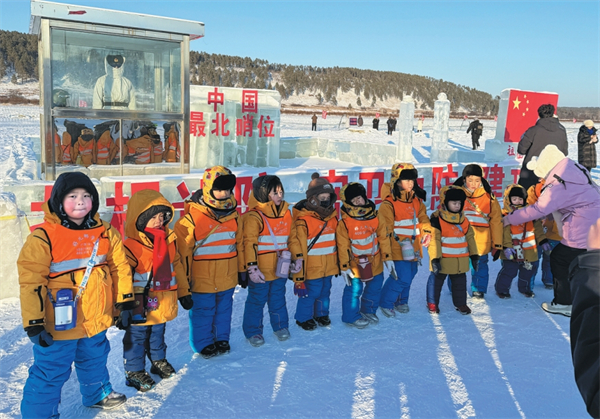Home>Harbin Today
Harbin economy on sound footing in first half
Updated : 2019-08-30
By ( chinadaily.com.cn )
Investment, consumer spending and international trade in Harbin -- in Northeast China’s Heilongjiang province -- achieved positive growth in the first half of the year for the first time since 2015, according to local officials.
The data was revealed in a report on the implementation of Harbin’s economic and social development plan in the first six months of 2019, which was released at the 25th meeting of the Standing Committee of the 15th National People's Congress of Harbin on Aug 27.
Analysts said the statistics showed that Harbin maintained steady economic growth in the first half of the year. From January to June, the city's GDP reached 271.77 billion yuan ($37.97 billion), accounting for 42 percent of the Heilongjiang province’s total, an increase of 1 percentage point over the same period last year.
A total of 154 city-level key industrial projects in Harbin broke ground, with an investment of 7.54 billion yuan, and nine provincial-level projects kicked off, with the total investment reaching 3.08 billion yuan.
Meanwhile, the number of industrial projects breaking ground with individual funding topping 100 million yuan increased by 15.2 percent during the period against the same period last year.
Officials said that Harbin New Zone, in particular, made a good show in the first half of the year.
Its regional GDP increased by 8.2 percent, 3.2 percentage points higher than the average growth rate of Harbin. In addition, Harbin New Zone had 66 industrial projects breaking ground, accounting for 42.9 percent of the city’s total.
It also introduced a batch of import industrial projects, featuring the Greenland Northeast Asia Trade Center, Shenzhen-Harbin Industrial Park, Poly Culture and Tourism Industrial Park and Baoneng International Economic and Trade City.
Officials said that in the second half of the year Harbin would focus on investment promotions centering around its “4+4” modern industrial system, the relocation of old industrial enterprises, and a push forward with the development of a night-time economy, as well as with the reform of State-owned enterprises.

Harbin ramps up childcare services
A new comprehensive service center for childcare in Harbin is expected to be finished by the end of the year.
-
Talent policies drive enterprise development in Harbin
Harbin's "30 New Talent Policies" represents an iterative upgrade to the talent policy system, helping attract and retain talent to bolster economic and social development.
-
Official website of 2025 Asian Winter Games goes live
Harbin, the host city of the 9th Asian Winter Games, has announced that the official website for the 2025 event has recently gone live.
-
Harbin launches measures to facilitate more foreign trade
In the first three quarters of 2023, the total import and export value of Heilongjiang province's goods trade hit 218.22 billion yuan.





